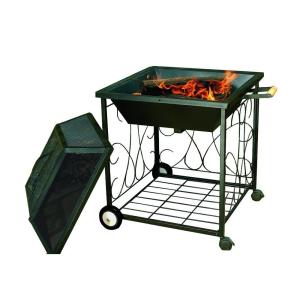With fall approaching I find my self wanting to cook something over a wood fire. My father-in-law used to cook a stew outdoors over a wood fired pot every fall. The stew was great, but to me, the real fun was the cooking.
He's long gone now and my brothers and I cook a stew outdoors every couple of years. But, they will not even entertain the idea of cooking over a wood fire.
So, I'm thinking of brewing a beer, maybe a porter, this fall over a wood fire. Has anyone here ever done it? If so, how did it go? What did you brew? Did any of the smoke flavor make it into the beer? If so, would I still need to include some smoked malt in the mash? I don't think I want a ton of smoked flavor in the beer. I want just a hint. And finally, would you do it again or was it just too much hassle?
He's long gone now and my brothers and I cook a stew outdoors every couple of years. But, they will not even entertain the idea of cooking over a wood fire.
So, I'm thinking of brewing a beer, maybe a porter, this fall over a wood fire. Has anyone here ever done it? If so, how did it go? What did you brew? Did any of the smoke flavor make it into the beer? If so, would I still need to include some smoked malt in the mash? I don't think I want a ton of smoked flavor in the beer. I want just a hint. And finally, would you do it again or was it just too much hassle?
































![Craft A Brew - Safale S-04 Dry Yeast - Fermentis - English Ale Dry Yeast - For English and American Ales and Hard Apple Ciders - Ingredients for Home Brewing - Beer Making Supplies - [1 Pack]](https://m.media-amazon.com/images/I/41fVGNh6JfL._SL500_.jpg)



























